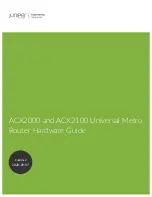
If the check result shows that the RPF interface is the different from the input interface in
the current (S, G) entry, which indicates that the (S, G) entry is invalid and the router will
correct the input interface to the packet’s actual arriving interface, and forward this packet
to all the output interfaces.
(3)
If the corresponding entry (S, G) doesn’t exist, the router will still perform the RPF check on
this multicast packet. With the RPF interface as the input interface, the router will create
corresponding entry with the RPF interface as the input interface combining related
routing information, and send this entry to the multicast forwarding table:
If the packet’s actual arriving interface is exactly the RPF interface, the RPF check will pass
and the packet will be forwarded to all the output interfaces;
If the packet’s actual arriving interface is not the RPF interface, the RPF check fails and this
packet will be discarded.
PIM Modes
PIM can be divided into two modes according to different routing mechanisms:
PIM DM: Protocol Independent Multicast-Dense Mode
PIM SM: Protocol Independent Multicast-Sparse Mode
PIM DM
PIM DM (defined in RFC 3973) is a multicast routing protocol in dense mode. It uses Push Mode
to transfer multicast packets and applies to small network with relatively dense multicast group
members.
The working mechanism of PIM DM is illustrated as below:
PIM DM assumes that there is at least one multicast group member in each subnet of the
network, and the multicast packets will be flooded to all the nodes in the network. Then
branches without receivers are pruned from the distribution tree, leaving only branches that
contain receivers. This “flood-and-prune” process takes place periodically. The pruned
branches can also resume to forwarding state periodically.
When a new receiver on a previously pruned branch of the tree joins a multicast group, the
PIM DM takes the Graft (see
) mechanism to actively resume this node’s function of
forwarding multicast data, thus reducing the time it takes to resume to the forwarding state.
Generally speaking, the packet forwarding tree in the dense mode is Source Tree (a
forwarding tree with multicast source as the root, and multicast members as the branches).
As the Source Tree is a forwarding tree with the shortest path from the multicast source to
the receivers, it is also called Shortest Path Tree (SPT).
The working process of PIM DM can be summarized as follows
:
Neighbor Discovering
SPT Building
Grafting
269
Содержание T3700G-28TQ
Страница 1: ...User Guide T3700G 28TQ T3700G 52TQ 1910012358 REV3 0 0 November 2018...
Страница 11: ...XI...
















































